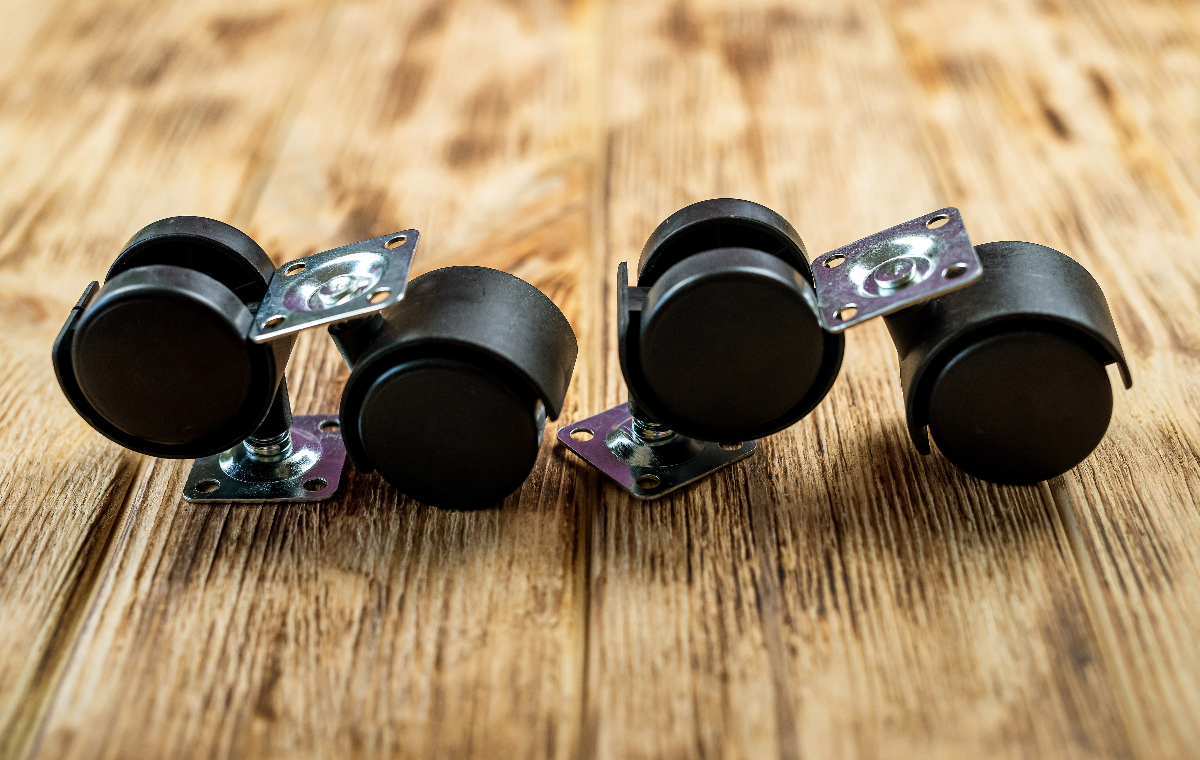Caster wheels that are incorrect for the floor surface can pose the risk of serious injury. Even brand new chairs can cause problems as they are routinely equipped with hard wheel casters suitable for carpeting floors. For chairs to roll safely, use hard wheels on carpeted floors, and soft wheels on chairmats and hard floor surfaces.
Many new chairs are equipped with hard wheel casters for use on carpeted surfaces only. Hard wheels skate and slide on hard floor surfaces. For safe rolling on chairmats, and all hard floor surfaces, soft wheel casters should be used. Soft wheels provide traction and prevent sliding.
Use soft wheel casters on hard floors or chairmats. Use hard wheel casters on carpeting.
Master Casters have been ergomically designed to reduce such risks to worker health and safety. Built for quality and durability, Master Casters are safety essentials. So, the question is not if you need Master Casters for safety, but which Master Casters you need. Important: for uniform caster wear and balanced, safe rolling, replace all casters at the same time.
There are ten Master Caster models to choose from. All come with a choice of hard or soft wheels and stem types for compatibility with metal or wooden chairs. We also supply tools and measuring devices for caster installation.
Just as tires must have the proper tread for safe driving performance on dry pavement as well as slick or snow-covered roadways, chair movement depends on wheels that provide appropriate traction on hard or soft surfaces.
Employers cannot afford to neglect any aspect of seating safety. They should never let worn or damaged casters remain in use. Nor should they take caster safety for granted when buying new chairs which are usually supplied with hard wheel casters. The threat to worker health is too great. The cost of potential damages is too high. The recent rise in “chair accident” liability suits makes this clear.
In adapting safety features to new chairs or retrofitting existing chairs, the corporate decision make must focus on casters — the truly “pivotal” safety component. It is the misuse of caster wheels and the use of flawed or worn casters that are the primary source of serious chair accidents.
Just as tires must have the proper tread for safe driving performance on dry pavement as well as slick or snow-covered roadways, chair movement depends on wheels that provide appropriate traction on hard and soft surfaces.
To custom-fit your chairs for safety, you need Master
Master Casters features an exclusive line of hard and soft caster wheels. Master lets you choose the casters that are the safest for specific types of surfaces, from vinyl, linoleum and hardwood floors or plastic chairs mats to industrial-grade or plus carpeting.
Hard floor surfaces require soft wheel casters or the chair will be subject to dangerously rapid movement. Many new chairs are equipped with hard wheel casters for use on carpeted surfaces only. Hard wheels skate and slide on hard floor surfaces. For safe rolling on chairmats, and all hard floor surfaces, soft wheel casters should be used. Soft wheels provide traction and prevent sliding. Spinning out of control while the user is seated or rolling away when the user rises, and then tries to resume a seat are other examples of what can happen if hard wheel casters are used on hard floor surfaces. In addition, injury due to falling is an obvious risk. A more insidious problem is the muscle strain that can result from constant efforts to keep the chair in place or trying to roll with an improper caster.
The requirements for carpeting floor surfaces is just the opposite. Hard wheel casters are necessary for the chair to glide smoothly across the floor. If, instead, the caster grips the carpeting and the user tugs back and forth to move the chair, it can topple over. Even if this hazard is avoided, such constant exertion can result in strain and injury.






